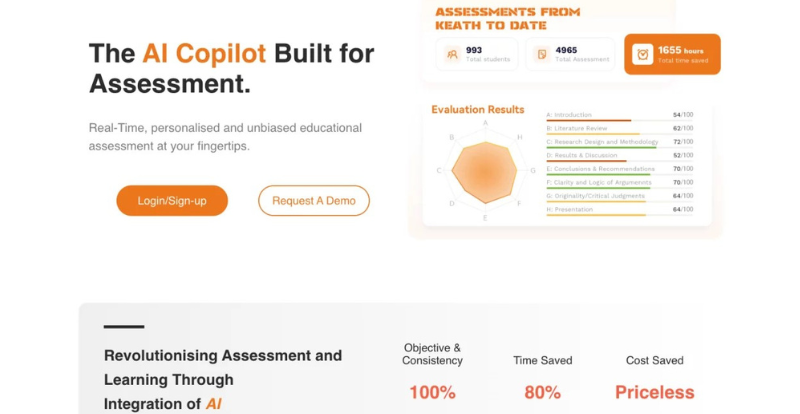President and Vice-Chancellor Professor Max Lu says that by harnessing the power of AI, the University of Surrey can prepare its students to shape the future of a world where change is the only constant. This article first appeared in Times Higher Education on 3 March 2024.
The recent media scrutiny of universities’ recruitment of international students has heightened the debate about what many observers see as English higher education’s broken business model.
There is widespread recognition in the UK that our world-class university sector is vital to driving forward our global science superpower ambition. Yet no political party has a clear vision to fix that business model, which is threatened by a near decade-long freeze on home undergraduate tuition fees. Combined with the loss-making nature of research, this has left every English university having to cross-subsidise teaching and research using the margin generated from international student fees.
However, as the pandemic underlined, such revenue is potentially vulnerable to international events and tensions, as well as domestic political qualms about immigration levels. Sector leaders like me must be visionary and innovative in response, diversifying funding streams through greater commericalisation, philanthropic support and alumni donations. Sharing expensive research facilities and services among neighbouring universities could also be more efficient.

The full potential of artificial intelligence
But much greater efficiency gains could result if we were to embrace the full potential of artificial intelligence. As Shitij Kapur, principal and vice-chancellor of King’s College London, recently wrote in an influential report, “Digital approaches and AI could well be the ‘Spinning Jenny’ of the university enterprise – creating an advantage for UK universities, just as the Jenny catapulted Manchester to the forefront of the Industrial Revolution”.
That said, it is the US that is currently leading the way – particularly Arizona State University, whose creative use of digital, online and AI tools has demonstrated how on-campus and online education, both at scale, can be combined in a top research university, all while access is increased and costs decreased. In addition, many US universities have adopted data-driven strategies to improve student retention and success. They have started to integrate AI to personalise learning experiences and use analytics to align academic offerings with both employer demands and student interests.
AI-driven assessment tools provide instant, personalised feedback. One can imagine students who struggle with complex data analysis techniques, for instance, being able to use an AI-powered tutoring system to pursue personalised exercises that significantly improve their analytical skills within days.
This not only makes the learning process more efficient but also fosters a richer educational environment. Before Christmas, for instance, I was privileged to host a highly successful launch event in the House of Lords for KEATH.AI, a cutting-edge tool developed by a team of academic entrepreneurs from the University of Surrey. This can mark and provide detailed feedback on students’ assignments or examinations, allowing the lecturer to focus on in-depth critique and personalised guidance, enhancing students’ learning experiences.

Skills development
AI could also be powerful in the realm of skills development. Through customised continuous and formative learning, with real-time skills assessments, students could be equipped with the latest in-demand competencies and encouraged to be more innovative. For example, a group of Surrey engineering students working on their capstone project utilised an AI platform to simulate and test their designs, enabling them to iterate their prototypes rapidly.
But it is imperative that teachers provide high-quality guidance to students on how to use AI. Ethan Mollick, from the University of Pennsylvania’s Wharton business school, recently advocated in a blog that we should focus on how people use AI in class, rather than whether they use it, as this will result in better learning outcomes, happier students and graduates who are better prepared for a world where AI is likely to be ubiquitous.
Beyond the classroom, AI can revolutionise student recruitment, institutional management and decision-making processes. Through predictive analytics and machine learning, institutions can optimise recruitment strategies, enhance operational efficiencies, and make data-driven decisions that align with strategic goals.
A recent MIT report highlights the critical role of effective data management and AI in driving high-performance organisations. However, the report concluded that only a small percentage of organisations currently excel in data strategy execution, with common barriers including complex data architecture and the lack of centralised machine learning model management. It is critical that institutions adopt cloud data management and develop strategies and invest in scaling AI and machine learning. The report also emphasises the need for open standards, enhanced security and governance to future-proof data architecture and foster a data-driven culture within organisations.
The journey ahead might, admittedly, be bumpy. We certainly need to manage the undeniable risks associated with widespread use of large language models in teaching and learning. Applications such as ChatGPT excel at providing quick and persuasive answers to whatever questions we ask, but they cannot properly evaluate the originality or rigour of an academic argument, particularly with respect to non-quantitative disciplines. Universities that incorporate AI into their education need good governance, and appropriate risk control strategy around its use.
Speaking as an incorrigible optimist, however, I believe there is much to be gained from utilising AI in education. By harnessing its power, we can prepare our students to shape the future of a world where change is the only constant.
